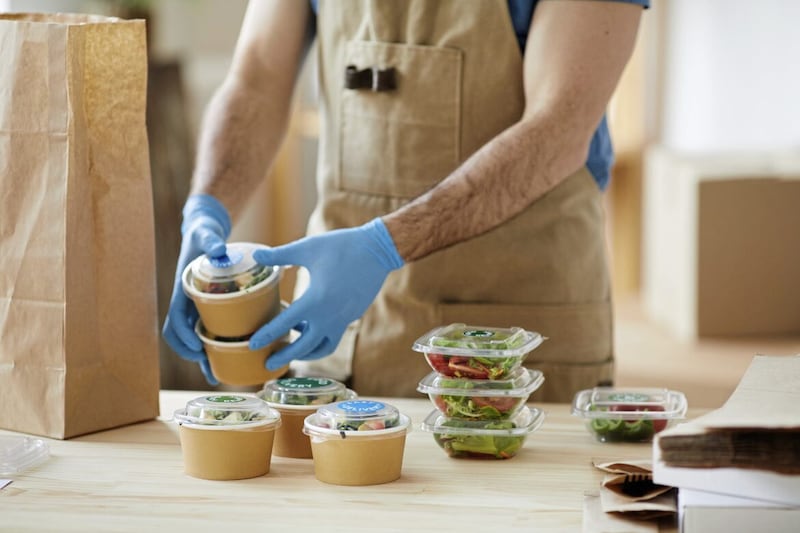THE question on many people’s lips of late has been whether food price rises have peaked.
Food price inflation hit 18.3 per cent according to the most recent figures from ONS. This is the highest annual rise in 45 years. And the hope is that food price rises will now begin to ease. But people perhaps misunderstand what this means. And are perhaps asking the wrong question anyway.
We have had a huge food price shock. In the 12 months to February, we saw food prices rise by as much as they did cumulatively in the previously 11 and a half years. Our own recently published Ulster Bank Ulster Fry Index, which tracks the price of items that make up a cooked breakfast rose at its highest record rate on record. Notably, milk was the biggest riser at 42.9 per cent in the year to February. Other essentials such as bread and eggs all rose by 20 per cent and above.
But perhaps the bigger shock to households is that no one is forecasting food prices will go back to where they were before 12 months ago. It seems like the days of low food prices are gone.
Whilst food price inflation will ease, it doesn’t mean that prices will fall. Slower rates of inflation just means that prices are increasing at a less rapid rate. NatWest forecasts that food prices will still be rising by around six per cent by the end of 2024. This is almost three times the long-term average. There are a range of factors at play. One of them is something of a correction from an unsustainable position.
After the Second World War, with rationing still in play until 1954, food accounted for around 40 per cent of total household income. By 2018/19, the average was about half of this (10.6 per cent), rising to 14 per cent in 2021. UK households spent in the year to March 2021 one in every seven pounds on food and non-alcoholic drinks. Given the prices rise we’ve subsequently seen, this will likely have risen to one in six today.
Given that the year ahead is set to see the second biggest fall in household living standards since the 1950s, with last year the biggest, the issue is that those on lower incomes are spending an ever-increasing proportion of their income on necessities such as food and energy.
The Asda Income Tracker is already showing that consumer spending is having to adjust to the new reality. It indicates that Northern Ireland households have just £93 per week left over after household bills on everything from food to housing and utilities are paid. This is less than half of the UK average. This squeezed disposable income means less money to spend in the local economy. And this comes at a time when the burden of taxation is increasing. So even as inflation eases, taxation will be eating up more and more household income.
The multi-year freezing of personal tax thresholds is set to net the UK exchequer £120 billion over the next five years – that’s equivalent to raising income tax by 4 per cent. Individuals in the higher income tax rate bracket will pay an additional £1,000 in income tax this year from this measure alone.
We can get hung up on whether we are in recession or not, but whether we’re edging above contraction or below in terms of GDP, it’s not going to feel any different to people being hit by huge food price increases. The speed and scale of the food price rises that we have witnessed are not something that most families can adjust to easily. The struggle for households will be whether they can maintain their food standard of living.
According to recent ONS statistics, 6 per cent of adults reported experiencing low food security, with 21 per cent eating food past its use-by date and 14 per cent reducing the size or number of meals to save money. Furthermore, one in five adults reported being unable to keep warm in their homes, impacting their mental and physical health. Many are also being forced to make adjustments regarding their health by taking less medication to keep prescription costs down (10 per cent). Clearly the latter isn’t an issue for Northern Ireland citizens. Populations facing the most difficulties in terms of food, energy, and health are those who have depressive symptoms, live in the most deprived areas, are unemployed, and those aged 16-29.
There is also an impact on the take-away food industry. Rishi Sunak recently said that Northern Ireland is the most exciting economic zone in the world, but for a number of years, it has arguably been the most exciting (or lucrative) place for a takeaway to be based. That’s according to comparisons with other parts of the UK.
According to the UK Living Costs and Food Survey, Northern Ireland households spend more on takeaways that anywhere else. But given the cost-of-living crisis and spiralling food costs, an increasing number of households will be under pressure to forego or reduce the frequency of their Friday night treat for cheaper alternatives.
For many households, what happens to food prices will determine whether they experience an economic recovery or not. The squeeze on their spending, particularly food, is their ongoing recession. Increasingly bread and butter issues (the price of) will be what the electorate want politicians to deal with.
:: Richard Ramsey is Northern Ireland chief economist at Ulster Bank







